Two bodies A and B of masses 5 kg and 10 kg in contact with each other rest on a table against a rigid wall . The coefficient of friction between the bodies and the table is 0.15. A force of 200 N is applied horizontally to A. What are (a) the reaction of the partition (b) the action-reaction forces between A and B ? What happens when the wall is removed? Does the answer to (b) change, when the bodies are in motion? Ignore the difference between and
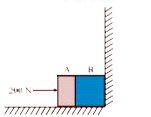 Solution in Telugu
Solution in Telugu
We assume perfect contact between bodies A and B and the rigid partition. In that case, the self-adjusting normal force on B by the partition (reaction) equals 200 N. There is no impending motion and no friction. The action-reaction forces between A and B are also 200 N. When the partition is removed, kinetic friction comes into play.
Acceleration of
Friction on A
, opposite to motion
, in the direction of motion
Topper's Solved these Questions
Similar Questions
Give the magnitude and direction of the net force acting on (a) a drop of rain falling down with a constant speed, (b) a cork of mass 10 g floating on water, (c) a kite skillfully held stationary in the sky, (d) a car moving with a constant velocity of 30 km/h on a rough road, (e) a high-speed electron in space far from all material objects, and free of electric and magnetic fields.
03:04View SolutionA metre long narrow bore held horizontally (and closed at one end) contains a 76 cm long mercury thread, which traps a 15 cm column of air. What happens if the tube is held vertically with the open end at the bottom ?
03:52View SolutionExplain why
The blood pressure in humans is greater at the feet than at the brain.10:51View SolutionA body of mass 2kg is at rest on a horizontal table. The coefficient of friction between the body and the table is 0.3 . A force of 5N is applied on the body. The acceleration of the body is.
10:51View SolutionA body of mass 2 kg at rest on a horizontal table. The coefficient of friction between the body and the table is 0.3 . A force of 5N is applied on the body. The force of friction is
09:25View SolutionTwo bodies A and B of mass 5 kg and 10 kg contact with each other rest on a table against a rigid The coefficient of friction between the bodies and the table is 0.05 A force of 200 N is applied horizontal on A What are (a) the reaction of thee wall (b) the the action , reaction forces between A & B ? What happens when the wall is removed ? Does the answer to (b) Change , when the bodies are in motion ? Ignore differnce between μs and μk
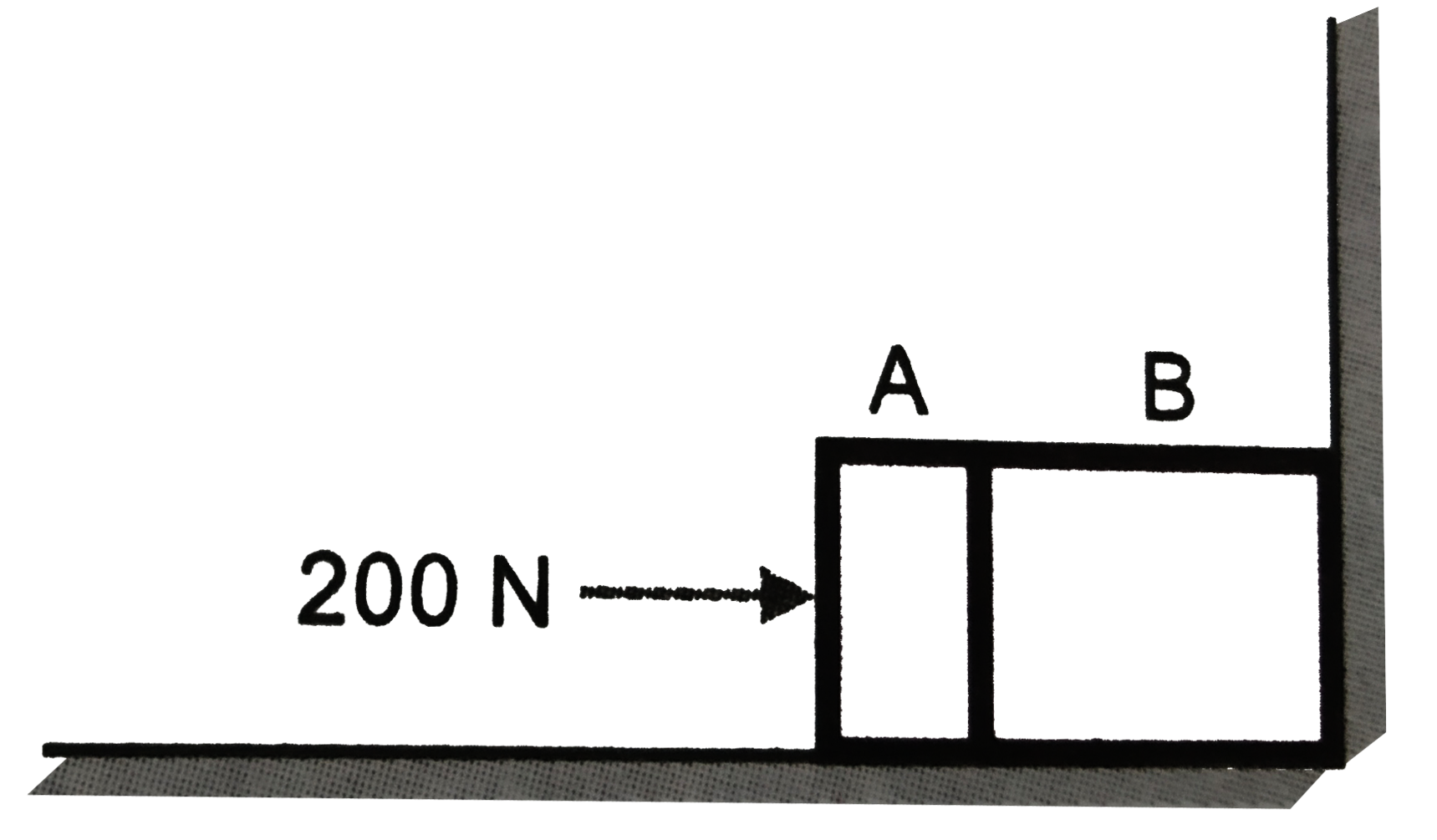 . 11:05View Solution
. 11:05View SolutionTwo bodies A and B of mass 5 kg and 10 kg contact with each other rest on a table against a rigid The coefficient of friction between the bodies and the table is 0.15 A force of 200 N is applied horizontal on A What are (a) the reaction of thee wall (b) the the action , reaction forces between A & B ? What happens when the wall is removed ? Does the answer to (b) Change , when the bodies are in motion ? Ignore differnce between μs and μk
 . View Solution
. View Solutionदो पिण्ड A तथा B जिनकी संहति क्रमशः 5 kg तथा 10 kg है, एक दूसरे के संपर्क में एक मेज पर किसी दृढ विभाजक दीवार के सामने विराम में रखे है (चित्र) पिण्डों तथा मेज के बीच घर्षण गुणांक 0.15 है। 200 N का कोई बल क्षैतिजत: A पर आरोपित किया जाता है। (a) विभाजक दीवार कि प्रतिक्रिया, तथा (b) A तथा B के बीच क्रिया-प्रतिक्रिया बल क्या है? विभाजक दीवार को हटाने पर क्या होता है? यदि पिण्ड गतिशील है तो क्या (b) का उत्तर बदल जाएगा ? μs तथा μk के बीच अंतर कि उपेक्षा कीजिए ।
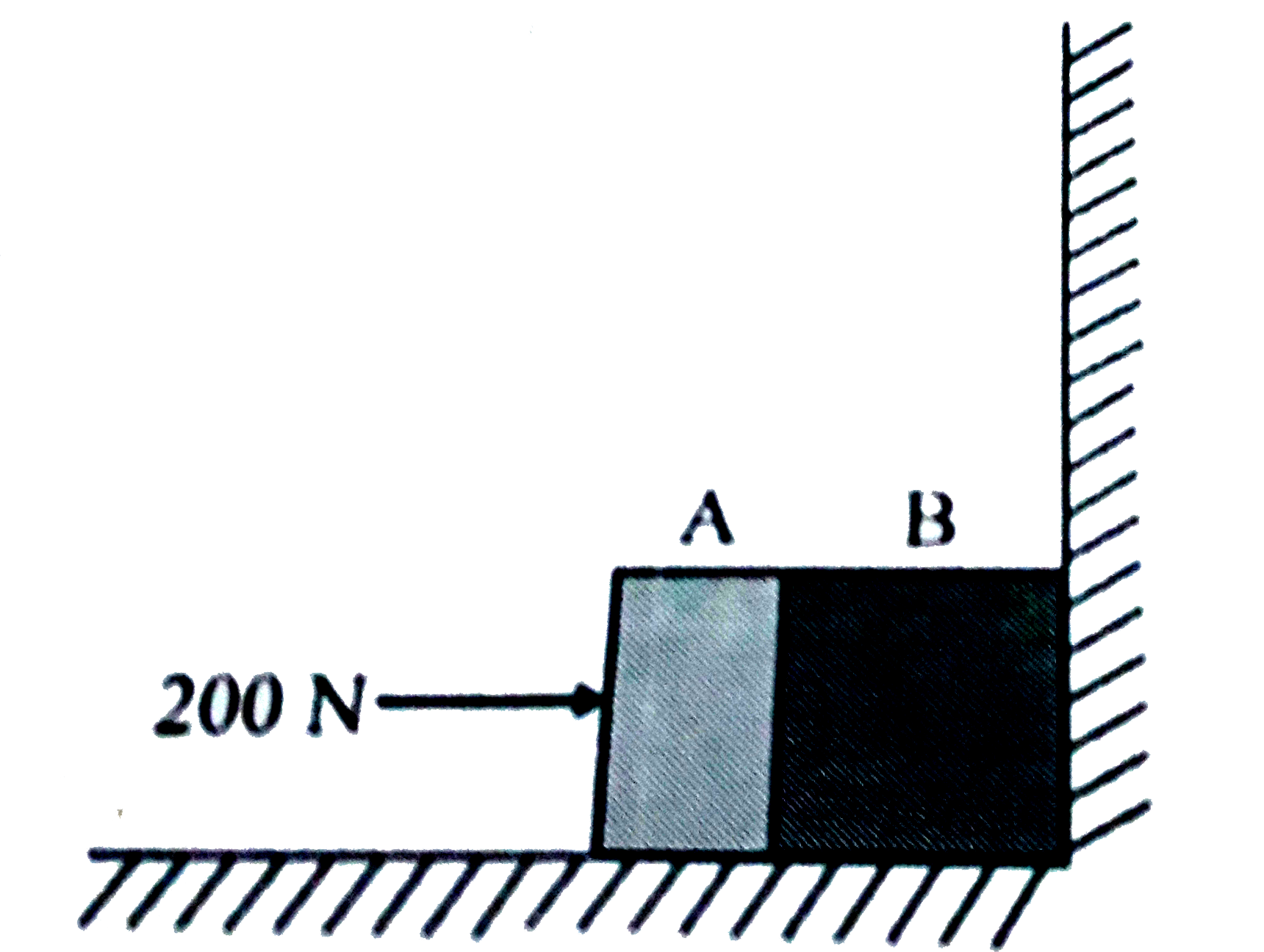 View Solution
View Solutionदो पिंड A तथा B, जिनकी सहती क्रमशः 5 kg तथा 10 kg है, एक-दूसरे के समैक में एक मेज पर किसी दर्द विभाजक दीवार के सामने विराम में रखे है (चित्र) । पिंडों तथा मेज के बिच घर्षण गुणांक 0.15 है 200 N का कोई बल क्षेतिजतः A पर आरोपित किया जाता है (a) विभाजक दिवार की प्रतिक्रिया, तथा (b) A तथा बीके बिच क्रिया-प्रतिक्रिया बल क्या है ? विभ्कजक दिवार को हटाने पर क्या होता है यदि पिंड गतिशील है तो क्या (v ) का उतर बदल जायेगा ? μs तथा μk के बिच अंतर की अपेक्षा कीजिय |
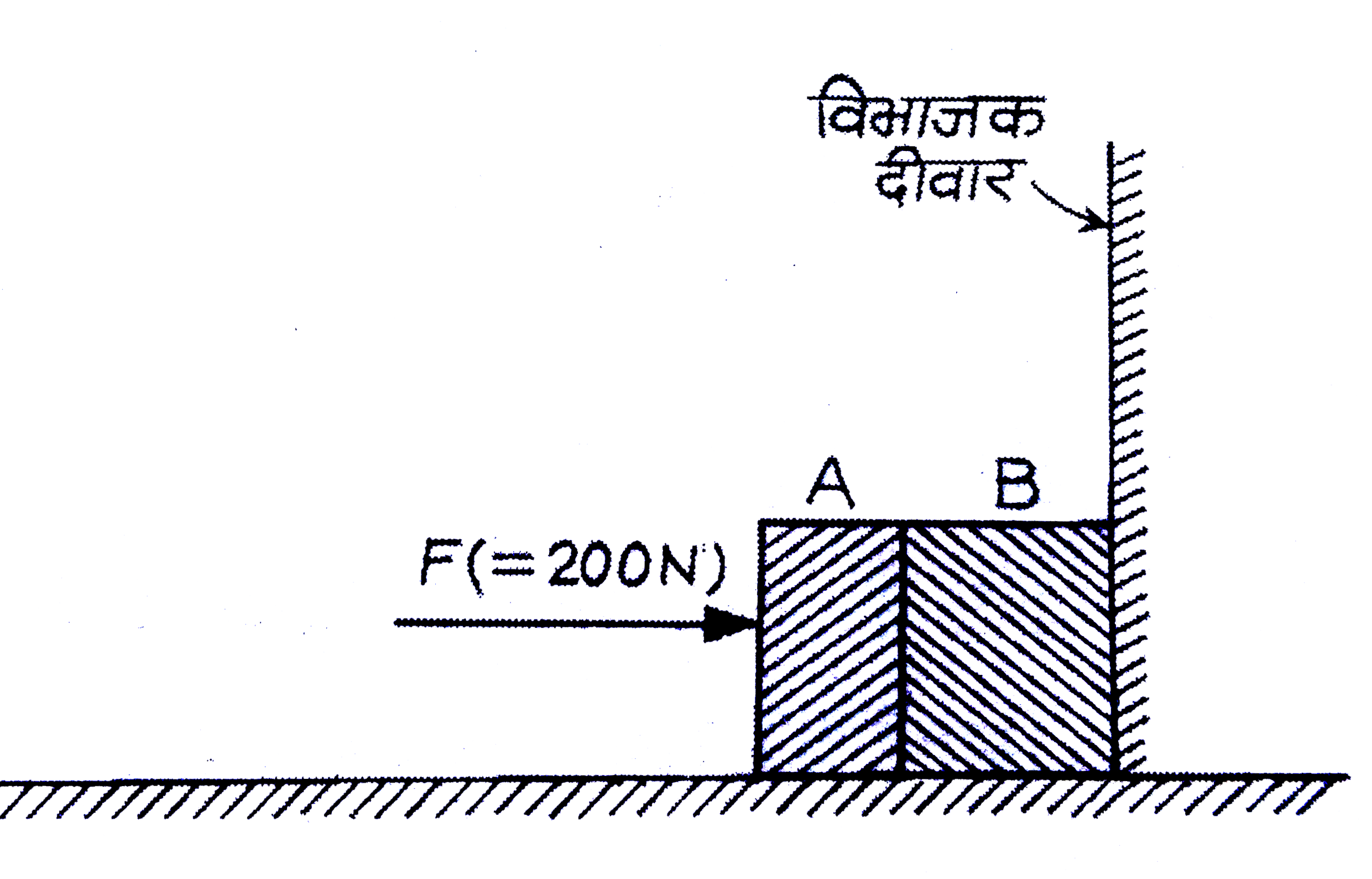 11:52View Solution
11:52View SolutionTwo bodies A,B of masses 5 kg and 10 kg in contact with each other rest on a table against a rigid wall. The coefficient of friction between the bodies and the table is 0.15. A force of 200 N is applied horizontally to A. (i) What is the reaction of the partition? (ii) The actionreaction forces between A,B? (iii) What happens when the wall is removed ? Does the answer to (ii) change when bodies are in motion ? [ Ignore the difference between mu_(s) and mu_(k) ]
06:23View SolutionTwo bodies A and B of masses 5 kg and 10 kg in contact with each other rest on a table against a rigid wall . The coefficient of friction between the bodies and the table is 0.15. A force of 200 N is applied horizontally to A. What are (a) the reaction of the partition (b) the action-reaction forces between A and B ? What happens when the wall is removed? Does the answer to (b) change, when the bodies are in motion? Ignore the difference between μs and μk
 02:52View Solution
02:52View SolutionTwo bodies A and B of masses 5 kg and 10 kg in contact with each other rest on a table against a rigid wall . The coefficient of friction between the bodies and the table is 0.15. A force of 200 N is applied horizontally to A. What are (a) the reaction of the partition (b) the action-reaction forces between A and B ? What happens when the wall is removed? Does the answer to (b) change, when the bodies are in motion? Ignore the difference between μs and μk
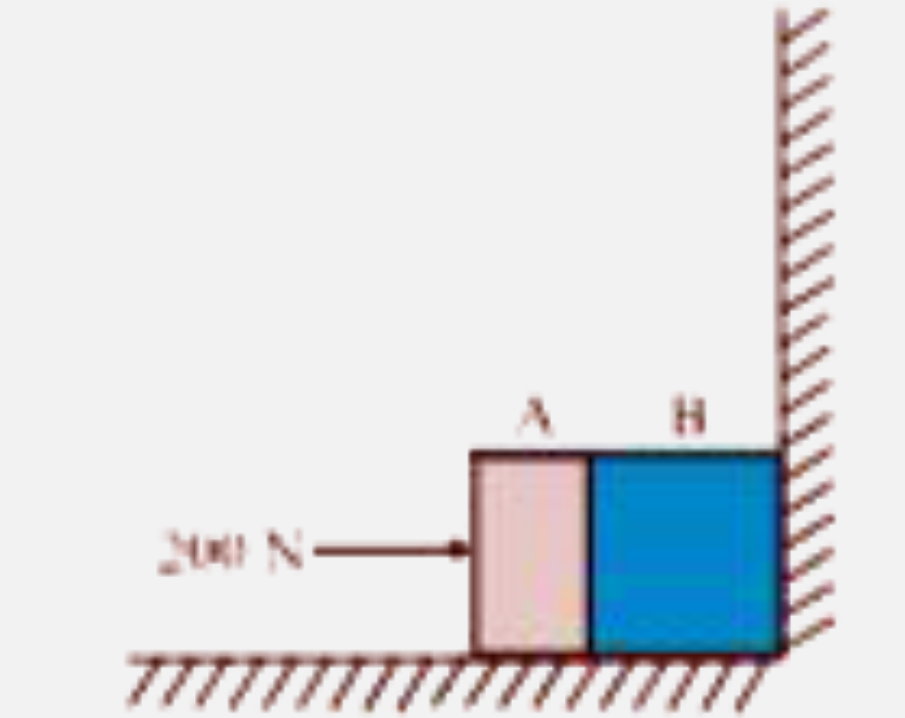 04:05View Solution
04:05View SolutionTwo bodies A and B of masses 5 kg and 10 kg in contact with each other rest on a table against a rigid wall as shown in figure. The coefficient of friction between the bodies and the table is 0.15. A force of 200 N is applied horizontally to A. What are (a) the reaction of the partition, (b) The action-reaction forces between A and B ? What happens when the wall is removed ? Does the answer to (b) change, when the bodies are in motion ? Ignore the difference between p_(s) and p_(k) .
04:32View Solution2 kg द्रव्यमान का एक गुटका (A), 8 kg द्रव्यमान के गुटके (B) जो कि क्षैतिज टेबल पर स्थिर है, पर रखा हुआ है (A) व (B) के मध्य घर्षण गुणांक 0.2 तथा (B) व टेबल के मध्य घर्षण गुणांक 0.5 है। 25 N का क्षैतिज बल (B) पर लगाया जाये तो (A) व (B) के मध्य घर्षण बल होगा :-
View SolutionTwo bodies A and B of masses 5 kg and 10 kg in contact with each other rest on a table against a rigid wall (Fig. 5.21). The coefficient of friction between the bodies and the table is 0.15. A force of 200 N is applied horizontally to A. What are :- the reaction of the partition.
04:17View Solution

